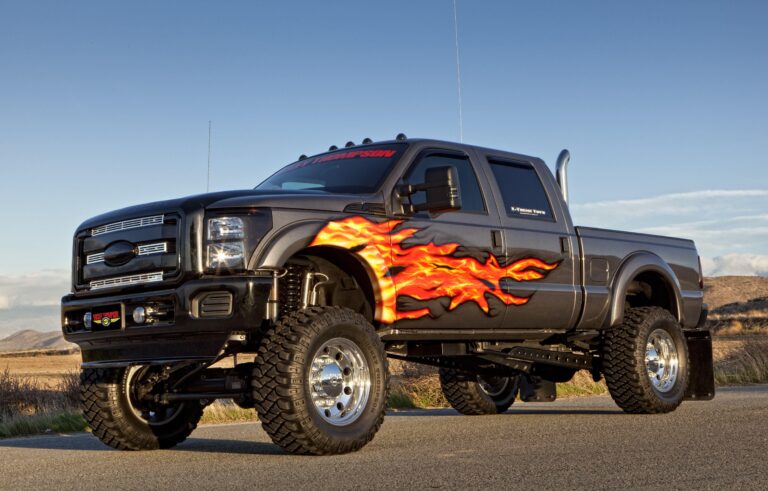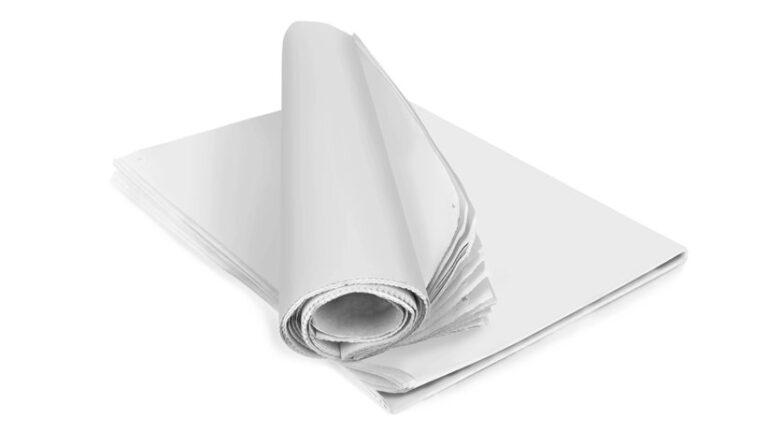What Years Truck Cap For Chevy Silverado: A Comprehensive Guide to Perfect Fit
What Years Truck Cap For Chevy Silverado: A Comprehensive Guide to Perfect Fit cars.truckstrend.com
Choosing the right truck cap for your Chevy Silverado is more than just picking a color; it’s about ensuring a precise fit that complements your truck’s design, provides optimal functionality, and stands the test of time. A truck cap, also known as a camper shell, truck topper, or tonneau cover with a raised roof, significantly enhances your Silverado’s utility by offering secure, weather-protected storage for tools, gear, or even a comfortable sleeping area. However, the critical question many Silverado owners face is: "What years truck cap for Chevy Silverado will fit my specific model?"
The answer, while seemingly simple, is nuanced. Truck manufacturers frequently update body styles, bed dimensions, and tailgate designs, meaning a cap designed for a 2010 Silverado will almost certainly not fit a 2020 model, even if they share the same nominal bed length. This comprehensive guide will delve into the intricacies of Silverado truck cap compatibility, helping you navigate the options and make an informed decision.
What Years Truck Cap For Chevy Silverado: A Comprehensive Guide to Perfect Fit
Understanding Chevy Silverado Generations and Bed Sizes
The primary determinant for truck cap compatibility is your Silverado’s specific generation and bed dimensions. Chevrolet has periodically redesigned the Silverado, and each redesign brings changes that affect how a cap sits on the bed rails, aligns with the cab, and seals against the tailgate.
Here’s a breakdown of major Silverado generations relevant to truck cap fitting:
- GMT400 (1988-1998/2000 Classic): These are the classic C/K series trucks, later branded Silverado. Caps for these models are distinct due to their bed rail contours and tailgate designs.
- GMT800 (1999-2007 Classic): The first generation officially badged "Silverado." These trucks saw significant changes in body lines compared to their predecessors. Caps for the 2007 "Classic" models are GMT800-specific, while the new 2007 models fall under GMT900.
- GMT900 (2007-2013): A complete redesign with sharper lines and revised bed dimensions. Caps from the GMT800 era will not fit.
- K2XX (2014-2018): Another substantial redesign. Caps from GMT900 will not fit these models due to changes in bed rail caps, tailgate, and cab contours.
- T1XX (2019-Present): The current generation, featuring an all-new design, different bed stamping, and unique tailgate options. Caps for previous generations are incompatible.

Beyond the Generation: Bed Length is Crucial
Even within the same generation, Silverado trucks come with various bed lengths, which are absolutely critical for cap fit:
- Short Bed (typically ~5.8 feet or 5′ 8"): Common on Crew Cab and some Extended Cab models.
- Standard Bed (typically ~6.5 feet or 6′ 6"): Available across most cab configurations.
- Long Bed (typically ~8 feet): Primarily found on Regular Cab and some Extended Cab models, often in heavy-duty variants.

It’s vital to measure your actual bed length from the bulkhead (front of the bed) to the inside edge of the tailgate, along the top of the bed rail. Nominal lengths can sometimes be slightly different from the true measurement a cap manufacturer uses. Also, consider your cab style (Regular Cab, Extended Cab, Crew Cab) as it often dictates the available bed lengths for your specific model year.

The Critical Role of Bed Dimensions and Shape
Why is finding the right year-specific cap so important? It boils down to subtle, yet critical, design differences across generations and even within different trims:
- Bed Rail Contours: The top edges of your truck bed are rarely perfectly flat. They have specific curves, angles, and sometimes integrated plastic caps. A truck cap is designed to sit flush and seal perfectly against these contours. Even a slight mismatch can lead to gaps, water leaks, and an unsecured fit.
- Tailgate Design: The curvature and angle of the tailgate, where the rear of the cap typically rests, change significantly between generations. A cap designed for a flat tailgate won’t seal properly on a curved one, and vice-versa.
- Cab-to-Bed Gap and Height: The distance and aesthetic alignment between the truck’s cab and the front of the bed also evolve. A cap is often designed to be flush with or slightly above the cab’s roofline for aerodynamics and appearance. A cap from an older generation might sit too high or too low, or create an unsightly gap.
- Overall Bed Width: While less common, the overall width of the bed opening can also vary slightly between generations, impacting how the cap’s side walls align.
- Stake Pockets and Tie-Downs: The location and design of stake pockets (the square holes in the bed rails) can influence how clamps are positioned for securing the cap.
New vs. Used Truck Caps: Considerations for Compatibility
The path you choose to acquire a truck cap heavily influences the compatibility challenge.
New Truck Caps
- Pros: When you purchase a new truck cap, you provide your Silverado’s exact year, model, and bed length to the manufacturer or dealer. They then build or order a cap specifically engineered to fit your truck’s precise dimensions and contours. This guarantees a perfect fit, comes with a warranty, and often allows for extensive customization (windows, lighting, interior finishes, roof racks).
- Cons: The primary drawback is cost, which is significantly higher than buying used.
- Actionable Advice: Always purchase from a reputable dealer and explicitly state your truck’s full specifications: Year, Make, Model (Silverado 1500, 2500HD, etc.), Cab Style (Regular, Extended, Crew), and Bed Length (5’8", 6’6", 8′). Double-check the order details before finalizing.
Used Truck Caps
- Pros: Significantly more affordable, making them an attractive option for budget-conscious owners.
- Cons: Compatibility is the biggest hurdle. Finding a used cap that perfectly matches your Silverado’s year and bed length can be challenging. You also inherit any wear, tear, or damage the previous owner inflicted.
- Actionable Advice for Finding a Compatible Used Cap:
- Know Your Truck’s Exact Specs: Reiterate your Silverado’s year, generation, cab style, and precisely measured bed length.
- Research the Used Cap: Ask the seller for the exact year, make, and model of the truck the cap came off. Many caps have a manufacturer’s label inside (often near the rear window or on the frame) with this information.
- Measure the Used Cap: If possible, measure the cap’s bottom dimensions (length and width) and compare them to your Silverado’s bed. Pay close attention to the front and rear profiles.
- Visual Inspection: Look at photos or inspect the cap in person. Does its front profile seem to match the curve of your Silverado’s cab? Does its rear profile look like it would seal well against your tailgate?
- Test Fit (If Possible): The absolute best way to ensure compatibility is to test fit the cap on your truck before purchase. Even a cap from the "correct" year might have minor variations that make it less than perfect.
- Be Realistic: Minor gaps can often be sealed with additional weather stripping. However, major discrepancies in length, width, or contour mean the cap is simply not compatible. Do not try to force a fit; it can damage both the cap and your truck.
Key Factors Influencing Cap Fit Beyond Year
To reiterate and summarize, these are the critical elements influencing whether a truck cap will fit your Chevy Silverado:
- Truck Generation: The primary determinant. Caps are rarely cross-generational.
- Bed Length: The most critical dimension. A 6.5-foot cap won’t fit an 8-foot bed, and vice-versa.
- Bed Rail Design: The specific contour, height, and integrated features of your truck’s bed rails.
- Tailgate Design: The shape and angle of the tailgate where the cap seals.
- Cab Height and Contour: For aesthetic alignment and proper sealing at the front.
- Heavy Duty vs. Light Duty (1500 vs. 2500/3500): While often sharing similar cab and bed styles within the same generation, there can be subtle differences in bed rail caps or overall bed width, especially in older models. Always specify if your Silverado is a 1500, 2500HD, or 3500HD.
Tips for Successful Truck Cap Acquisition
- Measure Your Bed Accurately: Use a tape measure to get precise readings of your bed’s length (from inside the bulkhead to the inside edge of the tailgate at the top rail) and width (across the widest point of the bed opening).
- Know Your Silverado’s Full Identity: Year, trim, 1500/2500/3500, cab style, and bed length.
- Prioritize Same Generation: When buying used, target caps that came off a Silverado of the exact same generation as yours.
- Don’t Rush: Take your time, especially with used purchases. A cheap cap that doesn’t fit is a waste of money.
- Consider Professional Installation: For new caps, dealers often include installation. For used caps, professional installation ensures proper sealing, clamping, and wiring (for interior lights or third brake lights).
Estimated Truck Cap Price Table for Chevy Silverado
Please note: Prices are highly variable based on brand, features, material, condition (for used), and regional market. This table provides general estimated ranges. The "Years of Compatibility" column emphasizes that fit is specific, not a price differentiator by year.
| Cap Type/Material | Key Features | New Price Range (Estimated) | Used Price Range (Estimated) | Compatibility Notes |
|---|---|---|---|---|
| Fiberglass (Basic) | Lightweight, painted to match, side windows, rear door | $1,500 – $2,500 | $400 – $1,000 | Year/Generation/Bed-Specific: Must match your Silverado’s exact year and bed length for proper fit. |
| Fiberglass (Premium) | Carpeted interior, interior light, vent windows, roof rack ready, power lock | $2,500 – $4,000 | $800 – $1,800 | Year/Generation/Bed-Specific: Fit is paramount for premium features to function correctly. |
| Aluminum | Durable, work-grade, often unfinished or white | $1,200 – $2,500 | $300 – $800 | Year/Generation/Bed-Specific: Less aesthetic-driven, but still requires correct dimensions. |
| Soft Topper | Foldable, lightweight, canvas/vinyl | $600 – $1,200 | $200 – $500 | Year/Generation/Bed-Specific: While more flexible, frame still requires proper bed rail dimensions. |
| Camper Shell (Tall) | Higher interior space, often for camping/utility | $2,000 – $5,000+ | $700 – $2,500 | Year/Generation/Bed-Specific: Height needs to clear cab, precise bed fit is critical for stability. |
Frequently Asked Questions (FAQ)
Q1: Can a truck cap from a GMC Sierra fit a Chevy Silverado?
A1: In most cases, yes. For a given model year and bed length within the same generation (e.g., a 2015 Silverado 1500 standard bed and a 2015 GMC Sierra 1500 standard bed), the truck beds are dimensionally identical. However, always verify the exact year, bed length, and trim level to ensure there are no subtle differences.
Q2: Will a cap from an older Silverado generation fit a newer one (e.g., a 2010 cap on a 2015 Silverado)?
A2: Almost certainly no. As detailed above, each major generation change (e.g., GMT900 to K2XX) brings significant alterations to bed dimensions, rail contours, and tailgate designs, making cross-generational compatibility virtually impossible for a proper fit.
Q3: My truck bed is 6 feet 6 inches, but the cap is listed as 6 feet 5 inches. Will it fit?
A3: This is where "nominal" vs. "actual" measurements come into play. A 6’6" bed and a 6’5" cap often refer to the same standard bed length. However, it’s crucial to confirm. If there’s a true inch difference, it’s usually too much for a perfect, sealed fit. Always measure your actual bed and the cap’s base precisely.
Q4: How do I correctly measure my truck bed for a cap?
A4:
- Length: Measure from the inside front edge of the bed (where it meets the cab) to the inside rear edge (where it meets the tailgate) along the top of the bed rails.
- Width: Measure across the widest point of the bed opening at the top rails, usually towards the rear.
- Cab Height (for aesthetics): Measure from the top of your bed rail up to the highest point of your cab roof. This helps in selecting a cap that looks proportional.
Q5: Are there universal truck caps that fit multiple Silverado years?
A5: No, not in the sense of a perfectly fitting, sealed unit. Some manufacturers offer "universal" utility caps, but these are typically basic aluminum shells that might sit on top of the bed rails with less precise contouring and sealing. For a seamless, weather-tight, and aesthetically pleasing fit, a cap must be designed for your specific truck’s dimensions and generation.
Q6: Can I modify a cap to fit if it’s "close"?
A6: Minor modifications like adding thicker weather stripping for a small gap are possible. However, significant modifications (cutting fiberglass, altering frame dimensions) are rarely cost-effective or successful. They can compromise the cap’s structural integrity, weather sealing, and appearance. It’s almost always better to find a cap that’s designed to fit.
Conclusion
Securing the right truck cap for your Chevy Silverado significantly enhances its versatility, security, and utility. The key to a successful acquisition lies in understanding that truck cap compatibility is almost entirely dictated by your Silverado’s specific generation and precise bed dimensions. Whether you’re buying new or navigating the used market, meticulous research, accurate measurements, and a clear understanding of your truck’s identity are paramount. By prioritizing a perfect fit over a perceived bargain, you’ll ensure your Silverado gains a functional, aesthetically pleasing, and durable addition that serves you well for years to come.






